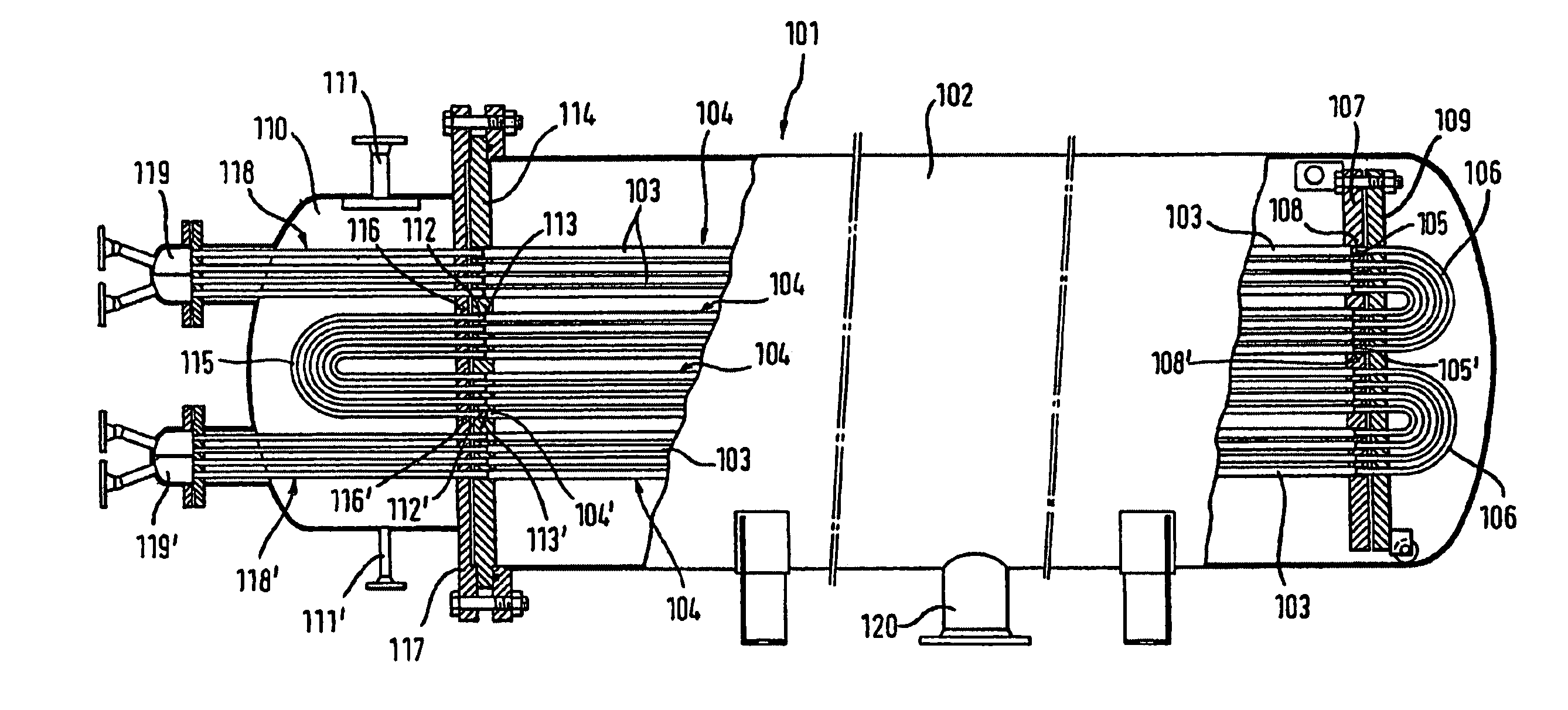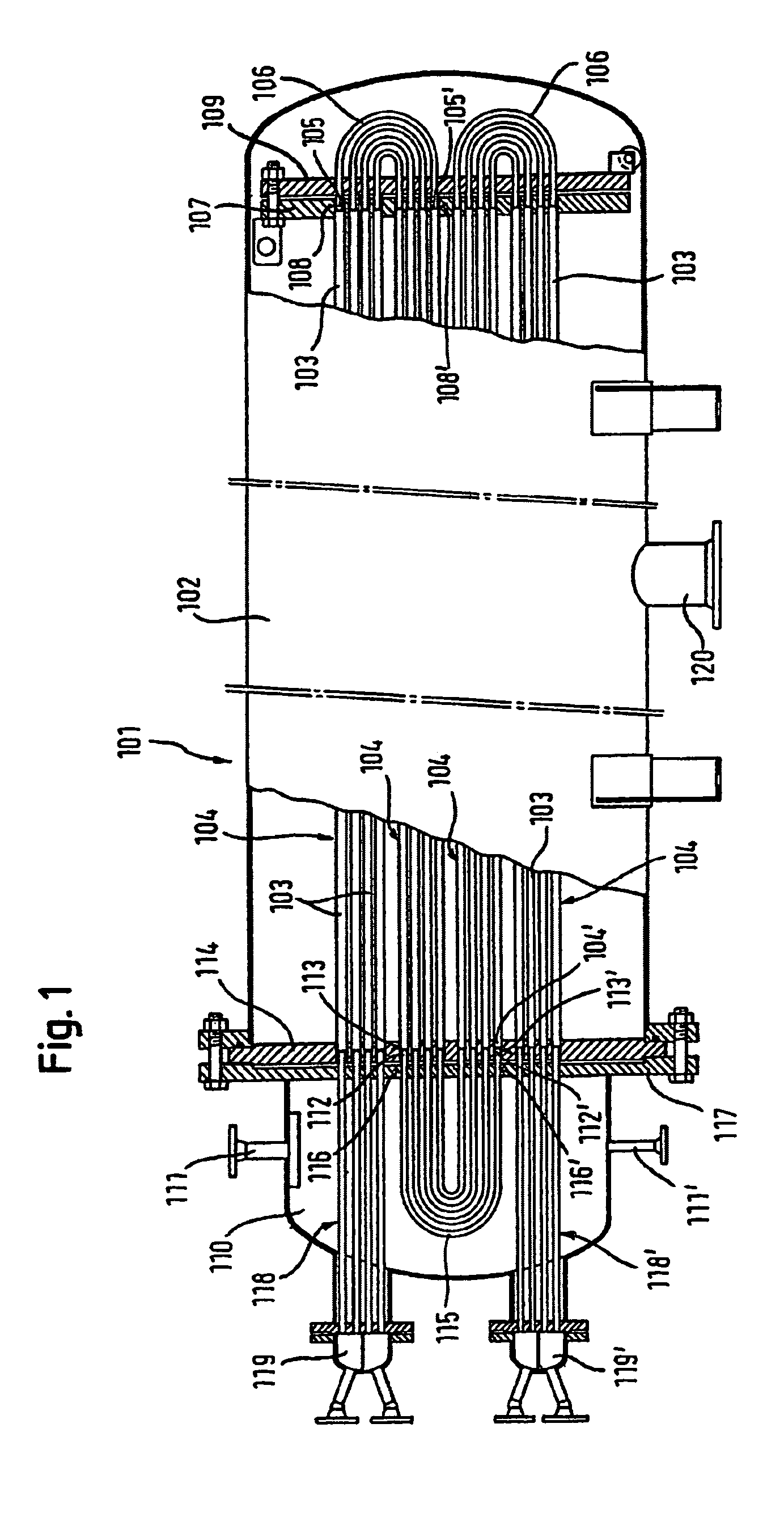Membrane pipe module
a membrane pipe and tube technology, applied in the field of tube modules, can solve the problems of reducing the driving force, affecting the performance of the process, and blocking the flux through the membrane,
- Summary
- Abstract
- Description
- Claims
- Application Information
AI Technical Summary
Benefits of technology
Problems solved by technology
Method used
Image
Examples
Embodiment Construction
Of THE INVENTION
[0009]In the state-of-art tube modules the tubular membrane segments arranged in a cylindrical housing are interconnected at their ends forming infinite membrane tubes. The tube module of the present invention differs from the state-of-art by the fact that a certain number of adjacent tubular membrane segments at one or both ends of the cylindrical housing is left open, these ends being connected by said U-shaped interconnecting tubes which lead with their open ends through the wall separating the cylindrical housing and the heating chamber. The feed mixture to be separated passes through the U-shaped interconnecting tubes inside the heating chambers where the required heat can be supplied. The heating chambers thus function as heat exchangers the heat being supplied e.g. by steam or another heat transfer medium.
[0010]In a preferred embodiment of the tube module of the present invention the tubular membrane segments are fixed at one end or at both ends in a plate pro...
PUM
| Property | Measurement | Unit |
|---|---|---|
| diameter | aaaaa | aaaaa |
| diameter | aaaaa | aaaaa |
| diameters | aaaaa | aaaaa |
Abstract
Description
Claims
Application Information
 Login to View More
Login to View More - R&D
- Intellectual Property
- Life Sciences
- Materials
- Tech Scout
- Unparalleled Data Quality
- Higher Quality Content
- 60% Fewer Hallucinations
Browse by: Latest US Patents, China's latest patents, Technical Efficacy Thesaurus, Application Domain, Technology Topic, Popular Technical Reports.
© 2025 PatSnap. All rights reserved.Legal|Privacy policy|Modern Slavery Act Transparency Statement|Sitemap|About US| Contact US: help@patsnap.com



